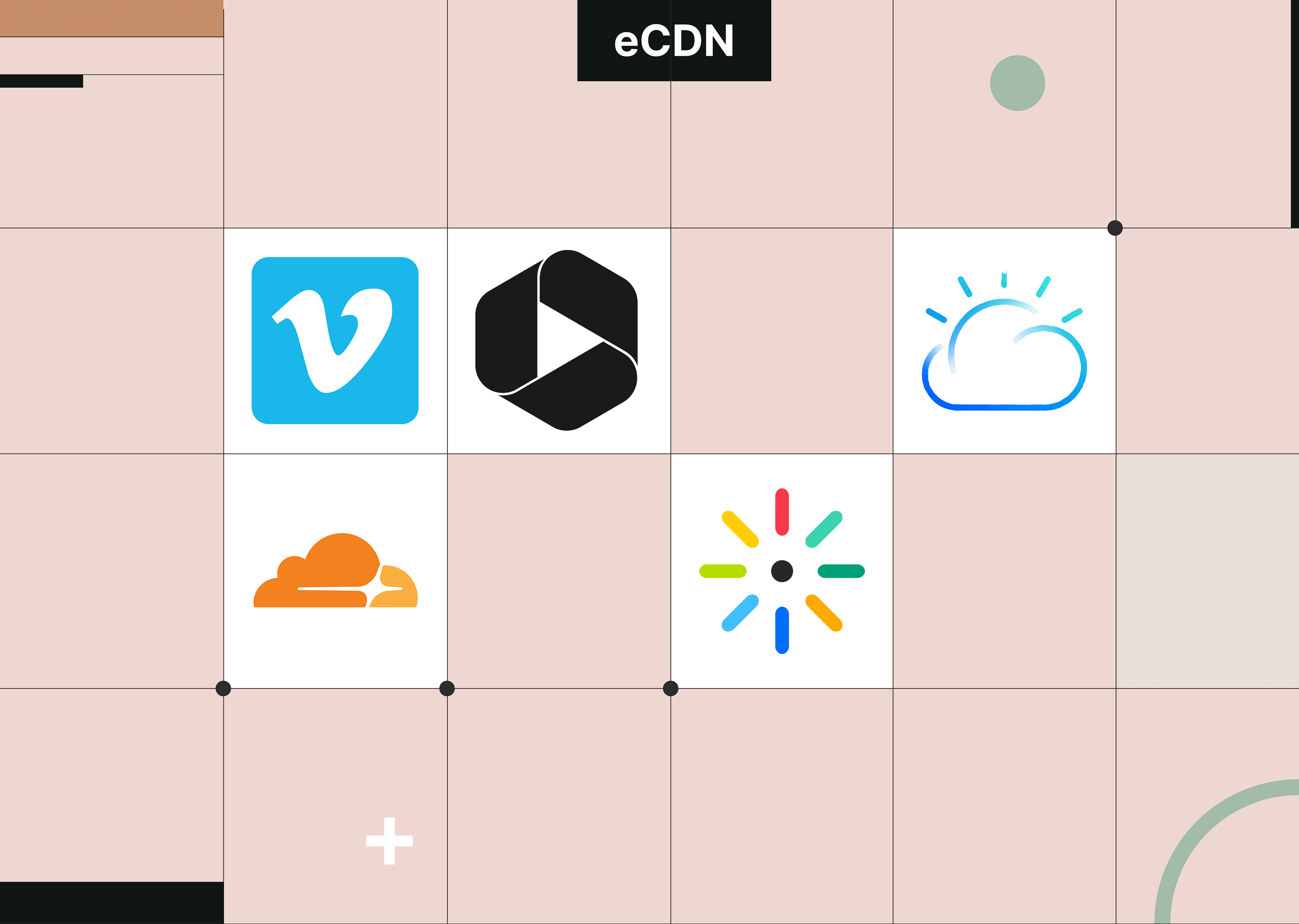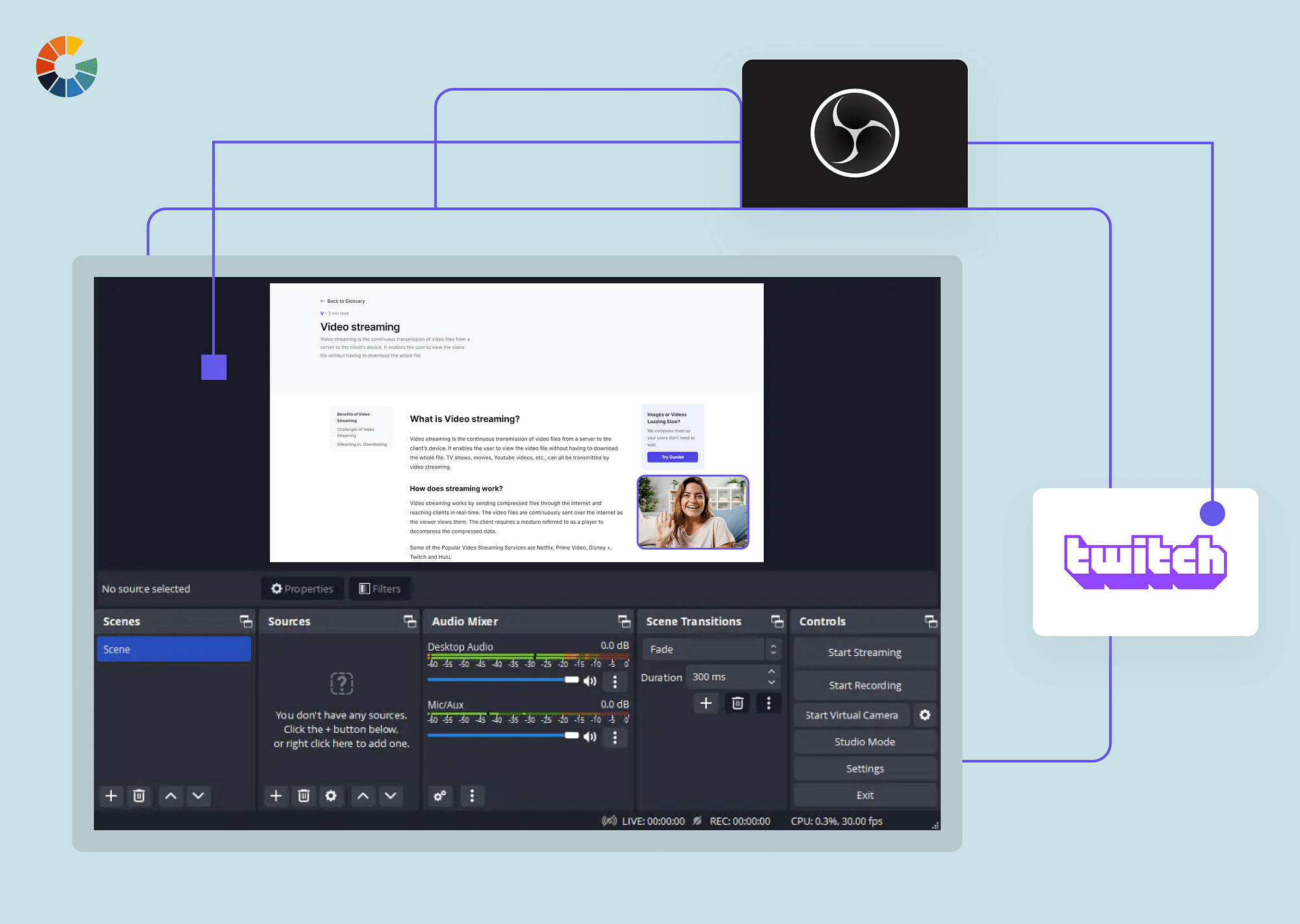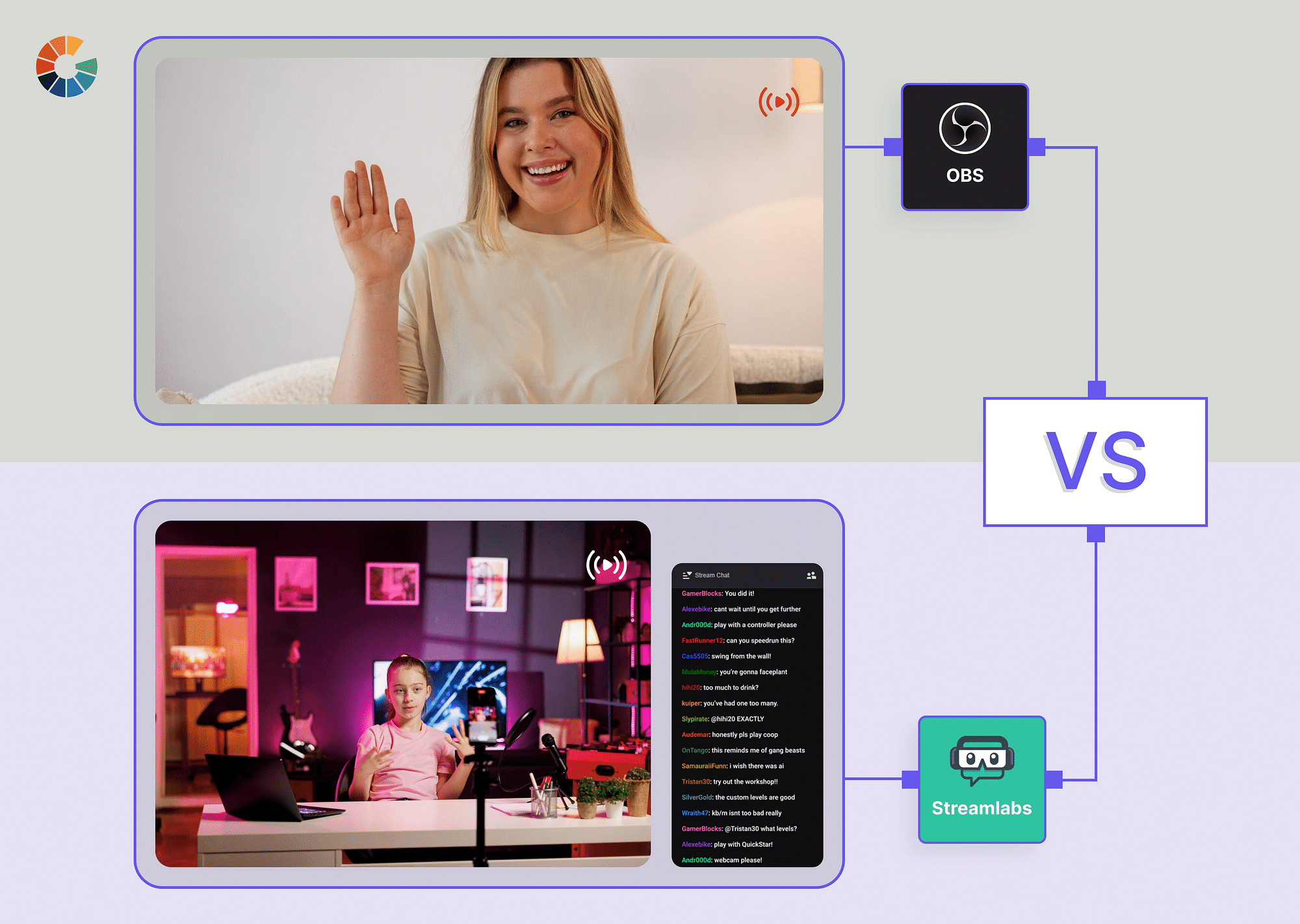In the dynamic landscape of video content, choosing the right platform is crucial for business success. With over 2.6 billion users and 500 hours of content uploaded per minute, YouTube seems an obvious choice. But the question arises: Is YouTube a good fit for your video business? It depends on the nature of your content and target audience. For instance, enterprises with specific needs like internal communication, corporate training, or handling sensitive information may find tailored solutions more fitting. YouTube doesn't necessarily deliver on those fronts. Let's find out in detail if YouTube for Business is a good choice or not.
What are the issues with using YouTube for Your Video business?
Let's explore the pros and cons of using YouTube for business:
Pros of Using YouTube for Business
- Massive reach and audience: With a staggering daily audience of over 30 million visitors and almost five billion daily video views, YouTube stands as a global platform that can expose your content to a vast and diverse audience. Its presence in 88 countries and support for 76 languages ensure that your videos can resonate with people around the world. The fact that Google owns YouTube brings about a significant advantage in terms of visibility. Videos hosted on YouTube often receive favorable placements in Google search results, enhancing the reach of your content.
- Organic discovery: YouTube's search and recommendation algorithms significantly enhance organic discoverability as users actively search for content. This natural discovery process aligns with user intent, allowing videos to reach individuals genuinely interested in your products or services, increasing the likelihood of conversion into leads or customers.
- Monetization options: YouTube videos can humanize your brand, capturing attention more effectively than text or images. With diverse monetization options like ad revenue, sponsorships, and merchandise sales, they not only generate income but also establish your brand's credibility in the market.
- Community building: Sharing videos on social media channels like YouTube can boost traffic and engagement, fostering community building through comments and discussions. To enhance website interest, embed videos on pages and blog posts, ensuring content stays relevant and appearing when people search, contributing to the long-term growth of your brand's community.
- Accessibility and ease of use: YouTube offers a cost-effective way to expand your audience without additional costs. It functions as a second website without hosting, allowing you to share videos on various platforms effortlessly.
This makes YouTube a powerful tool for small businesses, helping them boost their online presence and connect with a larger audience in a simple and effective way.
Cons of Using YouTube For Business
- Heavy competition: YouTube, being a widely popular platform, is saturated with content. This intense competition poses a significant challenge for businesses trying to capture the attention of viewers amidst a vast array of videos.
- Algorithm sensitivity: YouTube's algorithm is dynamic and subject to frequent changes. Adapting to these changes can be tricky, requiring businesses to stay informed and constantly adjust their strategies to maintain visibility and reach their target audience.
- Non-Stop Ads and Recommendations: YouTube videos are often accompanied by advertisements, and these ads can sometimes appear at multiple points during a video. While these ads contribute to creators' revenue, they can also be frustrating—since they disrupt the flow of the video and cause impatient users to bounce off. Not to mention, YouTube's recommendations tend to divert viewers from their intended business content.
- Limited Control Over Your Brand & Limited Features: YouTube has limitations when it comes to branding control since there are minimal customization options for video pages and players. Also, while YouTube provides some basic options for including calls-to-action (CTAs), the platform falls short when it comes to incorporating diverse CTAs like forms and banners—which can limit the engagement potential for businesses. This lack of distinct customization options can make it challenging for businesses to establish a unique brand identity on the platform.
- Monetization thresholds; YouTube has set minimum requirements for creators to be eligible for monetization. This threshold may exclude smaller creators or businesses with lower subscriber counts—thereby limiting their revenue opportunities on the platform.
- Poor Privacy and Support: YouTube's public nature and limited security features aren't always suitable for all types of business content, especially where sensitive and confidential information is concerned. It offers limited privacy options (public, private, or unlisted), which don't provide robust safeguards for confidential business videos. This can lead to potential piracy and copyright concerns. Businesses seeking enhanced content security need to explore platforms with advanced security features, such as password protection, DRM, and more.
- Insufficient Video Analytics: While YouTube provides a general overview of video performance metrics, it may lack the depth needed for businesses to derive actionable insights—such as identifying specific engaging video segments or nuanced viewer behavior. Only if businesses complement YouTube analytics with external tools that offer more advanced video analytics, like Google Analytics or Gumlet Analytics, can they glean deeper insights into viewer behavior, engagement, and other crucial metrics.
Factors to Consider When Choosing Your Video Hosting Platform
The following are the key points to consider before deciding on your video hosting platform:
- Target audience: Who is your target audience? Are they actively using YouTube? Identifying your target audience is crucial in determining the effectiveness of YouTube for Business. For instance, if your target audience is more business-oriented or professionals, platforms like LinkedIn might be more effective. For a younger demographic, platforms such as TikTok or Instagram could be considered.
- Content type: What is the style and format of your video content? Does YouTube align with your content creation style? Assessing whether YouTube's format and content style match your own is essential. For instance, if your content is educational or instructional, platforms like Udemy or Skillshare might be more suitable.
- Business goals: Clearly defining your business goals helps align your video strategy with desired outcomes. Are your primary goals centered around brand awareness? Or do you aim for lead generation or direct sales through video content?
- Budget: Evaluating your budget constraints is essential. YouTube may require investments in quality equipment, editing tools, and potentially paid promotions. Can you allocate funds toward the platform to leverage it effectively?
- Time commitment: Successful engagement on YouTube often requires a consistent upload schedule and active promotion. Are you willing to dedicate time to create and upload videos consistently? Can you promote your videos across various channels?
- Technical expertise: Proficiency in video creation and platform navigation is vital. It helps determine if you can produce content that meets quality standards and effectively engages with YouTube's features.
- Video analytics: Do you require in-depth insight into brand performance? If so, YouTube often falls short where analytics are concerned. If you need detailed video analytics to gather actionable insights into viewer behavior, engagement, and other crucial metrics, Gumlet is more suitable.
Other video hosting sites like YouTube you can consider
Here are a few top platforms to consider in place of YouTube for Business:
Gumlet
Gumlet is the go-to solution for reliable hosting and exceptional streaming, ensuring a seamless video experience across various devices and smartphones. With an intuitive Video CMS, Gumlet allows you to take complete control of your video content while seamlessly integrating it into your brand identity. It focuses on hosting, securing, and streaming videos efficiently, with options for branding customization, prevention of piracy, and content theft. Gumlet also provides simple, transparent pricing and guarantees high reliability and global reach with multi-CDN and a 99.95% uptime guarantee. Additionally, it offers complete control over video distribution, including 4k Streaming, DRM protection and better analytics to measure and grow audiences effectively.
Vimeo
Vimeo stands out as a go-to platform for professionals who prioritize top-notch content quality. Despite having a smaller audience compared to YouTube, Vimeo has established itself as a hub for superior content delivery. The Vimeo Pro subscription, priced at $20 per month, offers a premium experience with features like HD video and unlimited bandwidth. It also allows for a fully customizable video player and robust analytics. It makes an attractive choice for businesses and individuals who value quality and are looking to generate revenue from their video creations.
Wistia
Wistia is a top-notch solution for business video hosting, which creators can use to achieve total control over their brand identity. It has a comprehensive suite of features tailored to enhance user engagement and marketing effectiveness. Wistia's analytics provide detailed heat maps that provide in-depth insights into viewer interactions. This can help businesses to refine their content strategy for maximum impact.
SproutVideo
SproutVideo offers an array of features, such as search engine optimization options, customizable CTAs, analytics with heatmaps, email collection forms, curated playlists, and more. SproutVideo is committed to security and offers video-specific log-ins and advanced privacy measures. Its marketing-focused features, security measures, and SEO tools make SproutVideo a valuable choice for businesses looking for an integrated and privacy-conscious approach to their video strategy.
Brightcove
Brightcove is another video hosting platform designed for creators and businesses. It allows you to incorporate custom video players into your websites, social media pages, etc. It supports live streaming, which is available to Pro and Enterprise account users for real-time engagement with audiences. Brightcove has an impressive selection of 15-player templates, each of which supports multiple languages and social sharing for a compelling and tailored viewer experience.
Vidyard
Vidyard is another powerful hosting platform with advanced analytics giving access to real-time data. It also offers top-notch integration capabilities through Eloqua, HubSpot, or Marketo. Vidyard is known for its user-friendly customization, A/B testing features, security options, playlists, etc. It also offers a public uploader for video contests, making it a good choice for businesses prioritizing data-driven insights and engaging content strategies.
Key Takeaways
On the positive side, YouTube for Business offers an unparalleled reach, with massive audiences, organic discovery opportunities, and robust monetization options. The platform's community-building features, accessibility, and ease of use make it a valuable tool for small businesses seeking online growth. However, challenges arise in the form of heavy competition, non-stop ads and recommendations, limited control over branding and a lack of detailed video analytics that businesses need to carefully consider.
Ultimately, your decision should align with your target audience, the type of content you post, and what your business goals are. This is why it is a good idea to explore alternative platforms with advanced security features and more comprehensive analytics so businesses can fulfill their specific requirements.
FAQs
What if I need advanced analytics beyond what YouTube offers?
If you require advanced analytics beyond what YouTube provides, many alternatives, such as Gumlet, Wistia, Vidyard, or Brightcove, provide more comprehensive analytics packages, including detailed viewer engagement metrics, heatmaps, and integration capabilities with marketing tools. These platforms can offer a deeper understanding of how your audience interacts with your content.
Should I focus solely on YouTube or use it alongside other platforms?
While it depends on your specific goals and preferences, diversifying your content distribution channels can offer several benefits. You can broaden your reach and connect with new audiences, enhance overall visibility, and engage with diverse viewer demographics. However, make sure you always consider your content strategy, target audience, and desired outcomes to determine the most effective approach for your specific needs.
How can I overcome brand control and customization on YouTube?
You should consider alternative platforms that provide more flexibility, such as Vimeo, Wistia, and Brightcove. These allow for custom thumbnails and end screens, enabling you to showcase your brand identity more effectively. If you seek even more extensive customization options, Gumlet offers advanced player customizations, providing complete control over the visual elements of your video player.
What are the monetization options on YouTube for businesses?
YouTube offers various monetization options for businesses, including Channel Memberships, Super Chat & Super Stickers, Super Thanks, and Shopping to promote products. Additionally, businesses can monetize through Watch Page Ads, Shorts Feed Ads, and YouTube Premium.




